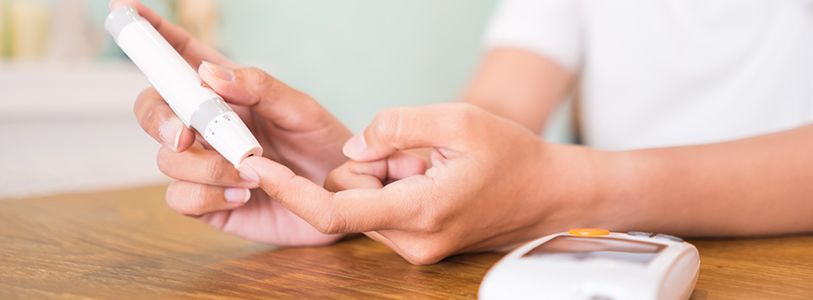Prediabetes: Know the risks and when to see a doctor

Cakes, cookies, candies … how sweet they are! But foods that taste good are not necessarily good for you. It is common knowledge that too much sugar consumption can pack on the pounds, but it can also open the door to a potentially life threatening condition called Type 2 diabetes.
Type 2 diabetes affects the way the body metabolizes sugar (glucose) — an important source of fuel for the body. The body either resists the effects of insulin — a hormone that regulates the movement of sugar into your cells — or doesn't produce enough to maintain a normal glucose level.
Diabetes does not emerge suddenly. It is a gradual process that typically begins with a stage known as prediabetes, where a person’s blood sugar level is higher than normal but not yet high enough to be classified as Type 2.
Prediabetes represents an increased risk for diabetes, and the host of complications that can accompany it, including cardiovascular disease, obesity, high cholesterol and blood pressure levels, heart disease, kidney disease and stroke. Without lifestyle changes, people with prediabetes are very likely to progress to Type 2 diabetes.
Are you at risk?
While prediabetes does not have symptoms, people who are at increased risk should be tested. People who are overweight or obese, with a Body Mass Index of greater than 25, and who have one of the following risk factors should be evaluated by their doctor:
- Diet. Eating red meat and processed meat, and drinking sugar-sweetened beverages, is associated with a higher risk.
- Inactivity. The less active a person is, the greater the risk.
- Age. Although diabetes can develop at any age, the risk of prediabetes increases after age 45.
- Family history. The risk of prediabetes increases if a parent or sibling has type 2 diabetes.
- Race. Although it's unclear why, people of certain races — including African-Americans, Hispanics, Native Americans, Asian-Americans and Pacific Islanders — are more likely to develop prediabetes.
- Gestational diabetes. If a woman developed gestational diabetes while pregnant, she and her child are at higher risk of developing prediabetes.
- Polycystic ovary syndrome. This common condition — characterized by irregular menstrual periods, excess hair growth and obesity — increases women's risk.
- Sleep. People with a certain sleep disorder (obstructive sleep apnea) have an increased risk of insulin resistance.
If you suspect you are at risk, seek an evaluation by your doctor, particularly if you notice that you are often very thirsty or very hungry, urinate more than usual, have blurred vision, or are losing weight without trying.
Testing for prediabetes
It is important to be tested for increased risk of developing diabetes, and to make adjustments to lifestyle and start medications to prevent disease progression, if prescribed. There are three commonly used tests:
- fasting glucose test, which measures fasting blood sugar levels;
- hemoglobin AIC test, which shows what the average blood sugar level has been for the past two to three months; and
- the glucose tolerance test, which measures a body's ability to metabolize glucose.
For patients without risk factors, testing should begin at age 45. If the results are normal, testing can be repeated at a minimum of three-year intervals. If the results are abnormal or the individual has any of the risk factors, testing should be repeated more frequently.
The good news
Certain lifestyle modifications can help lower the risk of prediabetes, with weight loss chief among them. Even a loss of 5 to 10% of body weight can substantially lower risk. Other measures include: eating a diet rich in fruits, vegetables and low-fat dairy products, with limited consumption of meats, sweets and refined carbohydrates; making time for regular physical activity each day (at least 30 minutes); limiting consumption of alcohol; and not smoking.






